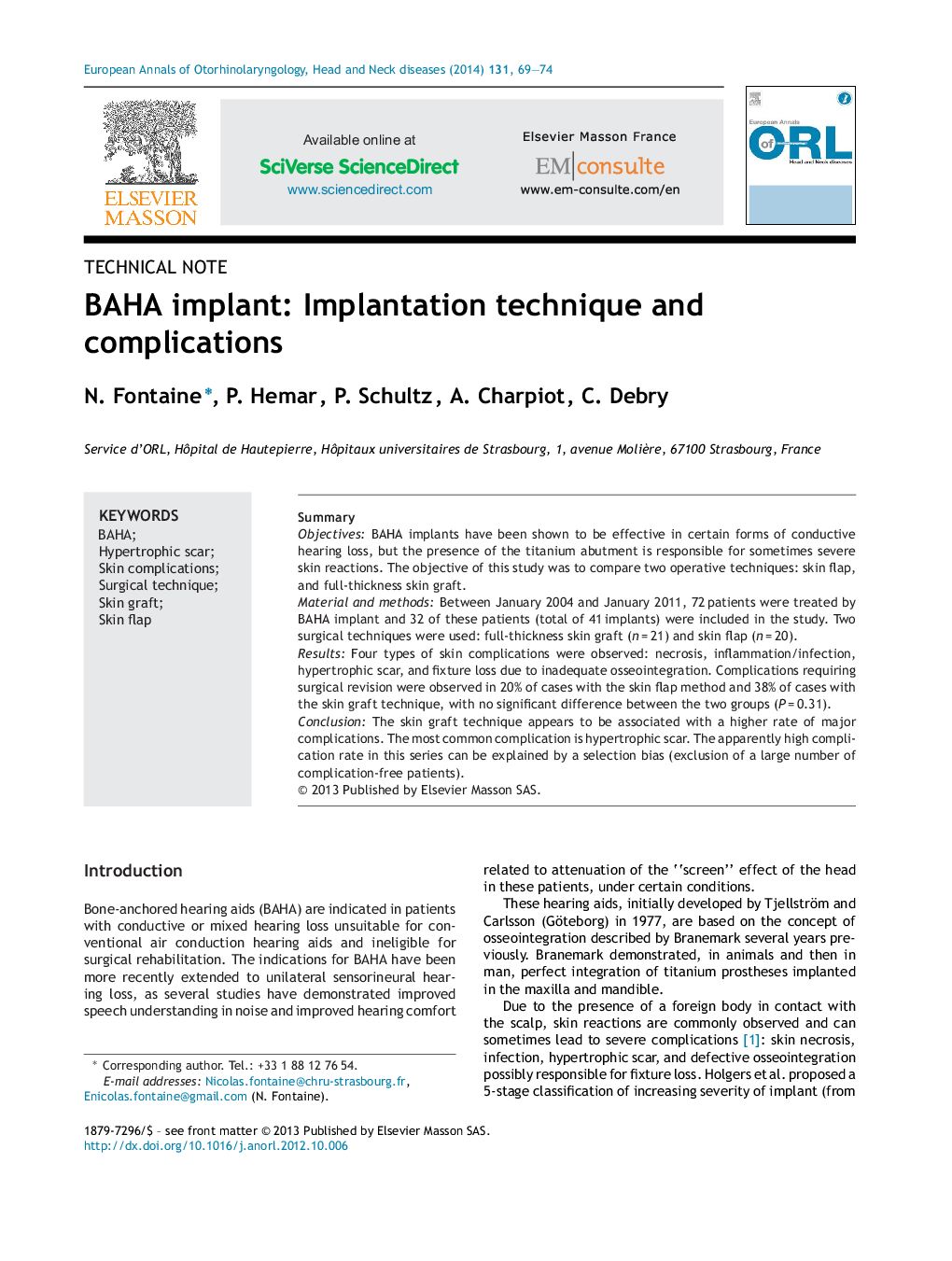| Article ID | Journal | Published Year | Pages | File Type |
|---|---|---|---|---|
| 4110160 | European Annals of Otorhinolaryngology, Head and Neck Diseases | 2014 | 6 Pages |
SummaryObjectivesBAHA implants have been shown to be effective in certain forms of conductive hearing loss, but the presence of the titanium abutment is responsible for sometimes severe skin reactions. The objective of this study was to compare two operative techniques: skin flap, and full-thickness skin graft.Material and methodsBetween January 2004 and January 2011, 72 patients were treated by BAHA implant and 32 of these patients (total of 41 implants) were included in the study. Two surgical techniques were used: full-thickness skin graft (n = 21) and skin flap (n = 20).ResultsFour types of skin complications were observed: necrosis, inflammation/infection, hypertrophic scar, and fixture loss due to inadequate osseointegration. Complications requiring surgical revision were observed in 20% of cases with the skin flap method and 38% of cases with the skin graft technique, with no significant difference between the two groups (P = 0.31).ConclusionThe skin graft technique appears to be associated with a higher rate of major complications. The most common complication is hypertrophic scar. The apparently high complication rate in this series can be explained by a selection bias (exclusion of a large number of complication-free patients).
